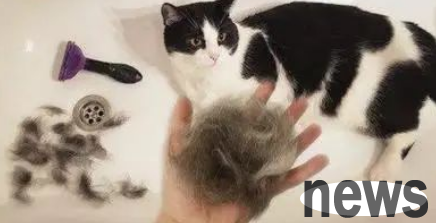For cat shovelers, it is a headache for their cats to be infected with fleas, but understanding the enemy can better eliminate the enemy. Today, let’s learn about fleas with the editor! What is a
flea?

Flea is a tiny parasitic insect that feeds on the blood of mammals and birds. It is also the most common ectoparasite in cats, often occurring in spring and summer. The life cycle of fleas
1

The life cycle of fleas includes four stages: eggs, larvae, pupae, and adult insects. Adult fleas visible to the naked eye only account for 5% of all flea populations. Fleas lay eggs under the cat's quilt. As the cat moves, the eggs will fall into the environment, polluting the home environment. The eggs further develop into larvae and break out of cocoon into pupa. The flea pupa is protected by shells. When the time comes, the flea adults will hatch and return to the cats and other animals to parasitize again. It takes about 3 weeks for a flea to complete its life cycle. A female flea lays 20-50 eggs a day, of which 50% of the female fleas hatched become the source of more than 20,000 adult fleas and more than 160,000 pre-adult fleas after 60 days. Simply put: 1 female flea will reproduce after 60 days, which has more than 20,000 adult fleas and more than 160,000 pre-adult fleas.
Causes of flea infection
There are fleas present
Fleas like to hide in grass, woods, etc. When the cat passes by, fleas may jump onto the cat.
Poor living environment
Humid and dirty environments are prone to breeding parasites such as fleas. The owner may also bring back a small amount of fleas and flea eggs when he goes out. They lurk at home and may crawl onto the cat at any time.
Infected by cats
Fleas are very contagious, and if the cat comes into contact with other cats infected with fleas, it is possible to be infected. This type of infection is particularly common when there are multiple cats in the family.
Symptoms of flea infection
1
Frequent scratching, licking hair, and gnawing on itchy areas:
Cats may even chew on their own skin or grinding their butts on the ground. When the hair is peeled open, the shovelers can find that there are small black particles on the cat's skin, which is the flea excrement.
2
Severe hair loss or hair loss:
When there are fleas, cats will use their paws and teeth to scratch their hair to relieve itching, so hair loss or hair loss will occur.

3
Accompanied with purulent dermatitis:
When fleas appear on the cat and breed in large quantities, purulent dermatitis is easily caused. If there are many fleas, the owner can also directly see fleas moving on the cat.
Flea Possible Diseases
1
Tableworm disease:
Larcises fleas feed on tapeworm eggs. As fleas mature, tapeworm eggs develop. Cats are most likely to swallow fleas when licking their hair, which makes tapeworms live in the cat's digestive tract, causing cats to get infected with tapeworm disease.
2
Cat scratch disease:
Cat scratch disease, also known as cat scratch fever, is caused by Hansaibal's total infection. The pathogens are mainly caused by contact or scratching or biting the skin by cats. Typical clinical features are primary skin lesions and lymph node enlargement.
3
Anemia:
Fleas suck cat blood, and for newborn kittens and kittens, there is a possibility of anemia. Prevention and Elimination of Fleas. Cats should be regularly dewormed with special external deworming drugs. The use of deworming drugs should follow product instructions and veterinary advice to ensure safety and effectiveness.
2
Pay attention to environmental sanitation
Fleas are easily hidden in sofas, carpets, bed sheets, etc., so it is crucial to regularly clean and disinfect cats' daily necessities and the home environment.
3
Bait your cat at least once a month, and use a gentle pet-specific shampoo to help remove fleas and eggs from your cat. But please note that bathing cannot completely replace the effect of deworming drugs and can only be used as an auxiliary measure.
4
Avoid contact
When cats go out, try to avoid contact with environments and animals that may carry fleas. At the same time, regular trimming of cats to keep their bodies clean can also help reduce the growth of fleas.

If you find that the cat has been infected with fleas, in addition to the above measures, you can also consider using flea collars or flea sprays for auxiliary treatment. But please note that when choosing these products, you must ensure that they are safe and effective to avoid unnecessary harm to your cat.